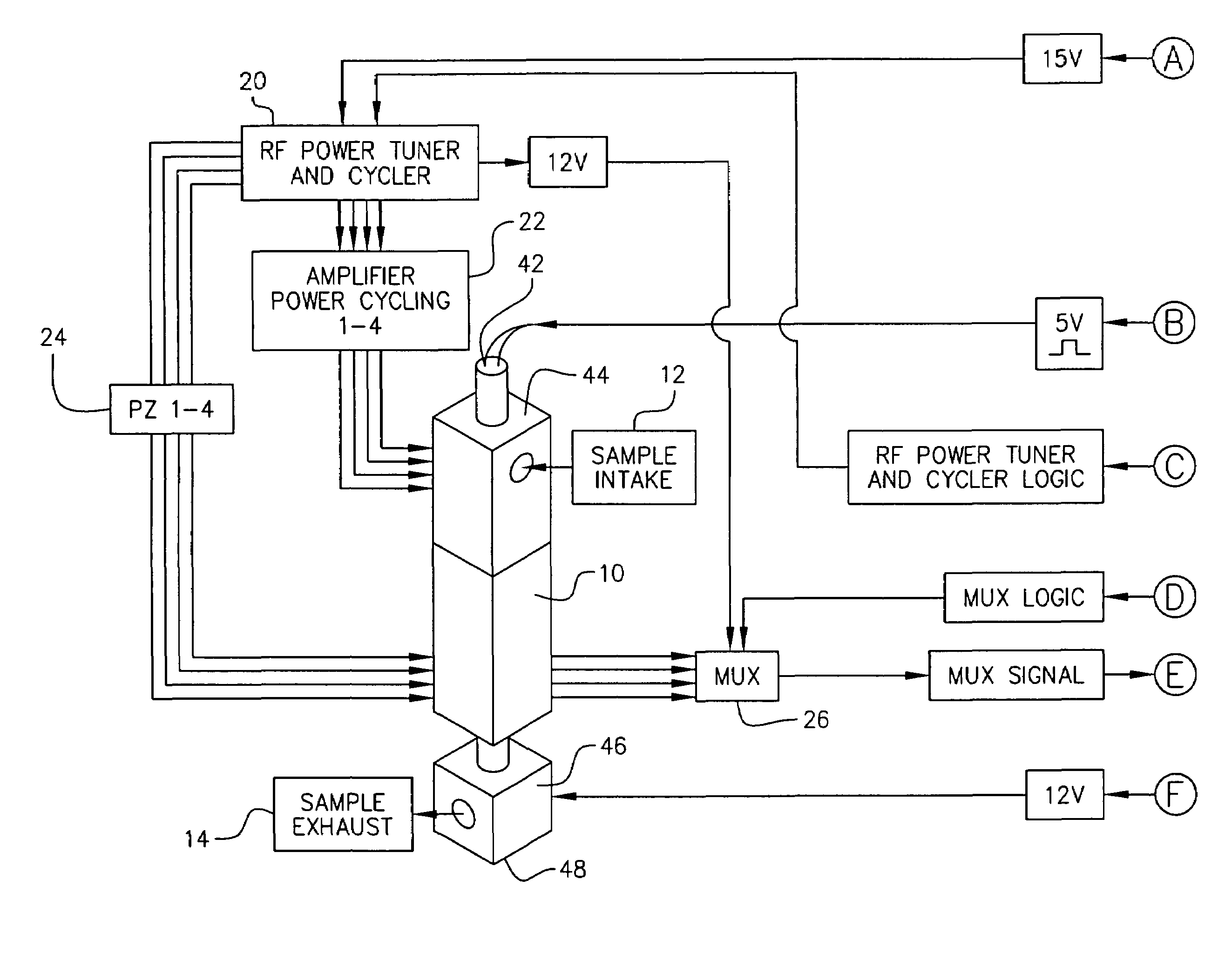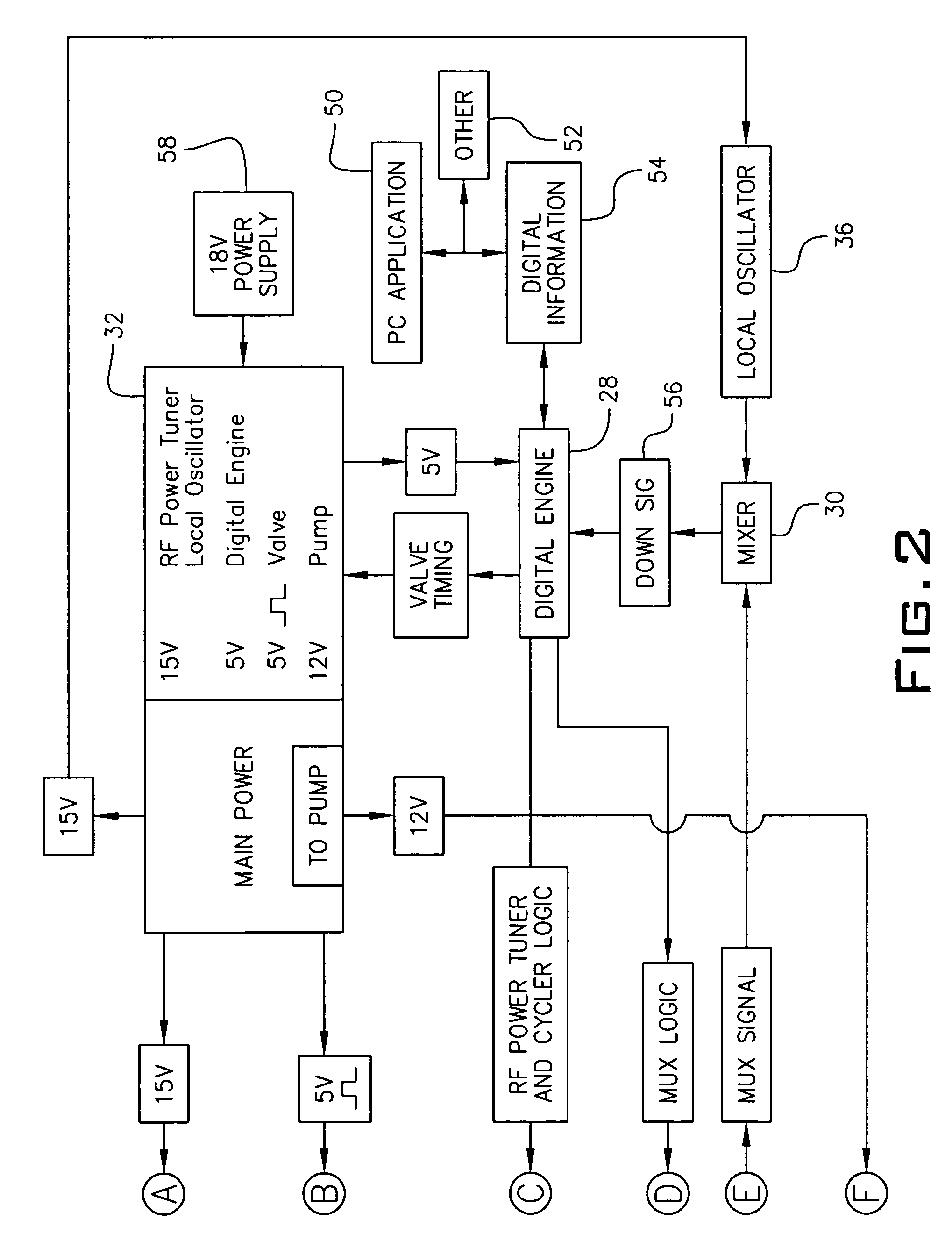Chemical agent detector
a detector and chemical agent technology, applied in the direction of generators/motors, instruments, mechanical means, etc., can solve the problems of unwanted harmonics and add to the overall noise of the rf system, and achieve the effects of high sensitivity, low power consumption, and fast response tim
- Summary
- Abstract
- Description
- Claims
- Application Information
AI Technical Summary
Benefits of technology
Problems solved by technology
Method used
Image
Examples
Embodiment Construction
[0026]Throughout the following detailed description, the same reference numerals refer to the same elements in all figures.
[0027]Referring to FIGS. 1 and 2, a block diagram is shown illustrating the major components of a chemical agent detector of the present invention. In its preferred embodiment, the chemical agent detector of the present invention is enclosed within a small table-top box. However, nothing herein limits that the detector be miniaturized into a small hand-held unit, a pocket sized unit, or even a wristwatch sized unit. And for that matter, nothing herein limits the detector from being a large stand alone mounted within in a building or incorporated within a ventilation system or HVAC system of any sized facility.
[0028]FIG. 1 illustrates a first part of the block diagram and FIG. 2 illustrates a second part of the block diagram. The block diagrams of FIGS. 1 and 2 are broken apart onto two sheets since the entire block diagram would not fit onto a single sheet. It i...
PUM
| Property | Measurement | Unit |
|---|---|---|
| frequency | aaaaa | aaaaa |
| frequencies | aaaaa | aaaaa |
| frequencies | aaaaa | aaaaa |
Abstract
Description
Claims
Application Information
 Login to View More
Login to View More - R&D
- Intellectual Property
- Life Sciences
- Materials
- Tech Scout
- Unparalleled Data Quality
- Higher Quality Content
- 60% Fewer Hallucinations
Browse by: Latest US Patents, China's latest patents, Technical Efficacy Thesaurus, Application Domain, Technology Topic, Popular Technical Reports.
© 2025 PatSnap. All rights reserved.Legal|Privacy policy|Modern Slavery Act Transparency Statement|Sitemap|About US| Contact US: help@patsnap.com



